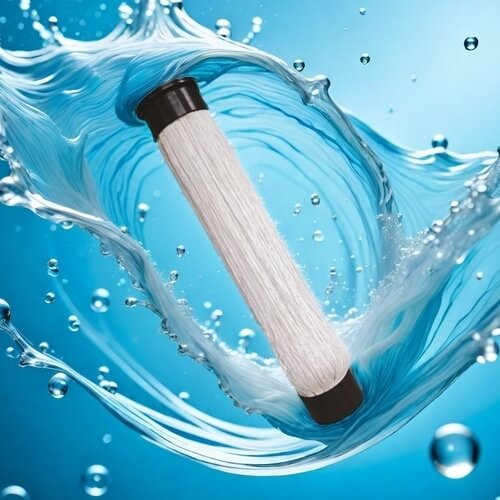A2O+MBR process for treating domestic sewage
A2O+MBR process is a commonly used combination of domestic sewage treatment technologies, which combines the advantages of A2O (Anoxic-Oxic) process and MBR (Membrane Bioreactor) technology and can efficiently treat domestic sewage. The following are the main steps and advantages of A2O+MBR process for treating domestic sewage:
A2O process: A2O process is a biological treatment process, including anoxic zone (Anoxic Zone), aerobic zone (Oxic Zone) and sedimentation zone (Settling Zone). In the anoxic zone, organic matter is converted into biodegradable substances by controlling the anoxic conditions; in the aerobic zone, aerobic bacteria are used to degrade organic matter, and nitrogen and phosphorus are removed at the same time; the sedimentation zone is used for solid-liquid separation and sludge precipitation.
MBR technology: MBR technology uses a membrane filtration device to intercept the sludge and suspended matter generated in the A2O process inside the reactor, achieving efficient solid-liquid separation and water purification. The membrane filtration device can effectively remove pollutants such as microorganisms, suspended matter, and colloids to obtain high-quality effluent.
Advantages:
High-efficiency purification capacity: A2O process can simultaneously remove organic matter, nitrogen and phosphorus, and MBR technology can efficiently remove microorganisms and suspended solids, making the effluent quality stable and highly purified.
Small footprint: Compared with the traditional activated sludge method and sedimentation tank process, the A2O+MBR process requires a smaller reactor volume, which can save floor space.
Reduce sludge generation: A2O+MBR process uses the combined effect of aerobic zone and anoxic zone in the A2O process, which can effectively reduce the amount of sludge generated and save subsequent sludge treatment costs.

Stable operation: MBR technology uses membrane filtration, which can effectively isolate microorganisms in wastewater, reduce sludge concentration fluctuations in the system, and improve the stability of the system.
Strong adaptability: A2O+MBR process has strong adaptability to water quality fluctuations and water volume changes, and is suitable for different types of domestic sewage treatment.
Simple operation and management: Compared with traditional wastewater treatment methods, A2O+MBR process is relatively simple to operate and manage, with a high degree of automation, and can achieve remote monitoring and intelligent management.
In summary, the A2O+MBR process is a feasible option for treating domestic sewage, with its advantages of high purification capacity, small footprint, and reduced sludge generation. This process has been widely used in domestic sewage treatment plants and is of great significance in terms of environmental protection and sustainable development.
